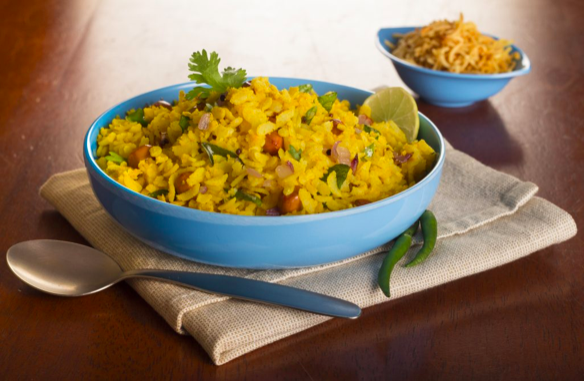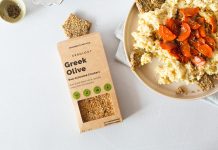For those unfamiliar with Indian recipes and cooking, flattened rice is perhaps one of the best-kept breakfast secrets. Breakfast in the Indian subcontinent comprises savory meals such as ‘Poha’ which is made out of flattened rice flakes and lends itself beautifully to a variety of recipes.
One of the most popular breakfast dishes, Poha is a staple breakfast in many Indian homes. Fairly simple to make and very tasty, poha prepared from flattened rice flakes and a few other condiments is, in fact, a low-fat, nutritious meal.
This is because flattened rice is vegan-friendly, lactose-free, heart healthy and fat-free. It has eleven minerals and vitamins including iron.
What are rice flakes?
Flattened rice also known as rice flakes are made by dehusking rice. The dehusked rice is then flattened into flat, light dry flakes. This is similar to the process that is used for oats.
Rice flakes are pretty much the Asian equivalent of oats. Flattened rice can be cooked and eaten in a variety of ways, even raw is very easily digestible which makes it a popular choice across age groups. Here are some other benefits of flattened rice:
- Flattened rice has no cholesterol and no saturated fat either.
- The sodium content of flattened rice is very less and therefore it has good calories.
- It has essential nutrients like iron, Vitamin C, calcium and Vitamin A.
- It is completely gluten-free.
- Flattened rice is tasty and easily digestible and an ideal meal for those whose digestion is slightly impaired.
- Contains Vitamin B1 and therefore aids in stabilizing blood sugar.
- Flattened rice has 20 mg of iron for every 100 grams of raw rice flakes. If you squeeze a cut lemon on the rice flakes, then it improves the iron absorption considerably.
You can also use brown flattened rice as a variation for your poha. It has a red tinge due to the presence of anthocyanin that is a flavonoid. But unlike white rice, red rice doesn’t undergo much processing and so its bran layer is intact. The bran is rich in fiber, vitamins, and minerals.
Some tips before you prepare poha:
Washing rice flakes
The ideal practice is to wash the poha gently beforehand so that the flakes don’t disintegrate or become mushy. Wash and drain the flattened rice for the best results.
Storing rice flakes
It is best to store rice flakes in an airtight container. You can keep them in a glass jar just like your oats and cereals.
Nutrition information
One serving of rice flakes(around 60g) or 1 cup contains 98 calories. This can be broken down to 91% carbs, 8% protein, and 1% fat. Rice flakes keep you fuller for longer and therefore considered a good breakfast option.
Choosing flattened rice
You can buy flattened rice at any Indian store. It is advisable to buy the medium thick variety for best results.
And now for the recipe:
Ingredients
- 1 onion or shallot (medium, chopped)
- 1 tomato (medium, chopped)
- 1 green chili (chopped, optional)
- 1/4 cup cilantro leaves(chopped)
- 3 tablespoons peanut or vegetable oil
- 1/2 cup peanuts (raw)
- 1 tablespoon black mustard seeds
- 3 curry leaves
- 1/2 tablespoon turmeric powder
- 1/2 cup peas (fresh or frozen)
- 2 cups poha (flattened rice)
- 2 tablespoons lemon juice
- Salt
- 1 lime (sliced)
Instructions
- Finely chop the onion, tomato, chili, and cilantro leaves. Set aside.
- Heat cooking oil and add raw peanuts. (Skip the peanuts if you are allergic).
- Cook until golden brown (about 2-3 minutes), then remove peanuts from pan and set aside.
- Add black mustard seeds and curry leaves to the oil and fry until they crackle.
- Add chopped onion and chili and cook until onions turn light pink. Season with salt and turmeric powder.
- Add chopped tomato and peas, then cook for another 4-5 minutes.
- Gently wash and drain poha in cold water. Do not leave poha in water for too long as it is very delicate!)
- Add poha, peanuts, and cilantro leaves to pan with veggies, then stir softly and cook on a slow flame for 5-7 minutes.
- Remove from heat and let sit for 2-3 minutes.
- Stir in lemon juice and cilantro leaves
Poha is best served piping hot. There are many variations of this recipe once you master the basic version. You can also add other vegetables as per your preferences. For instance, a popular version of this recipe uses boiled potato chunks. In any case, poha is a healthy, low-fat breakfast option that you should certainly try out.



















